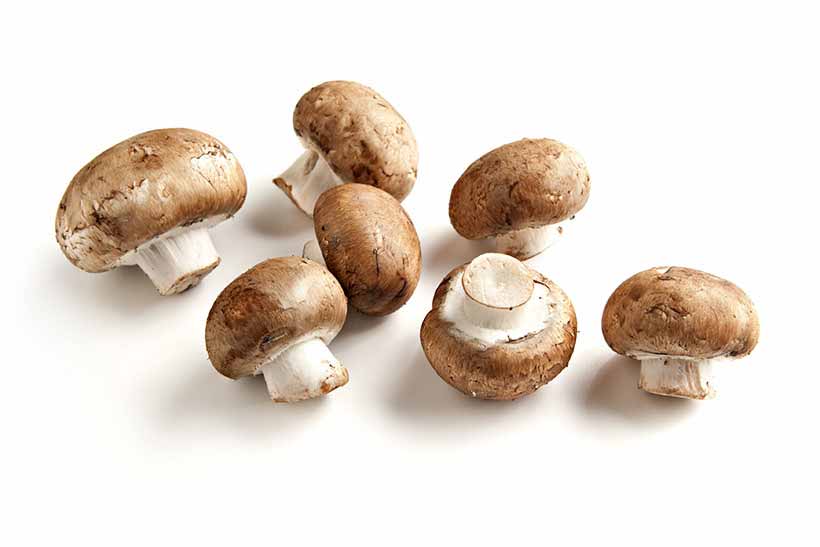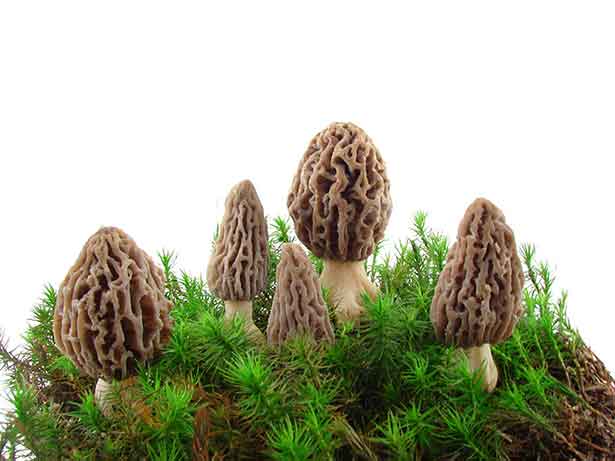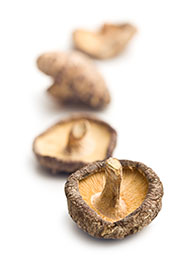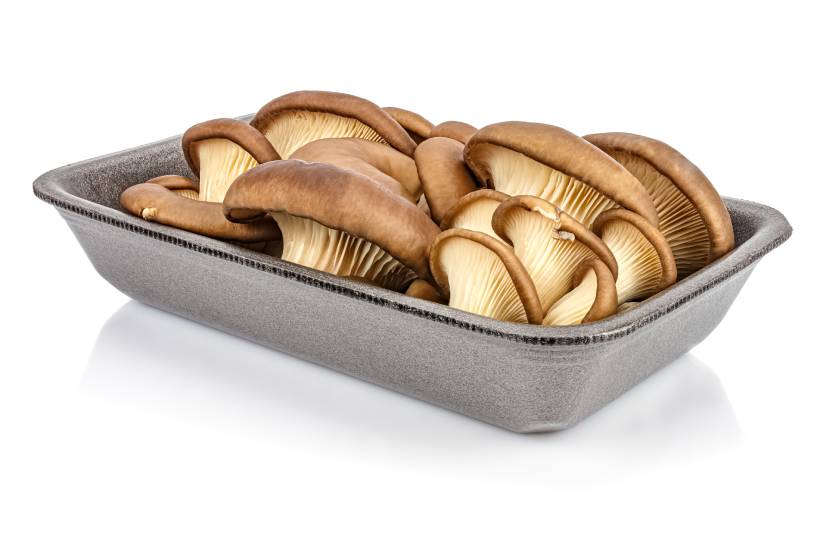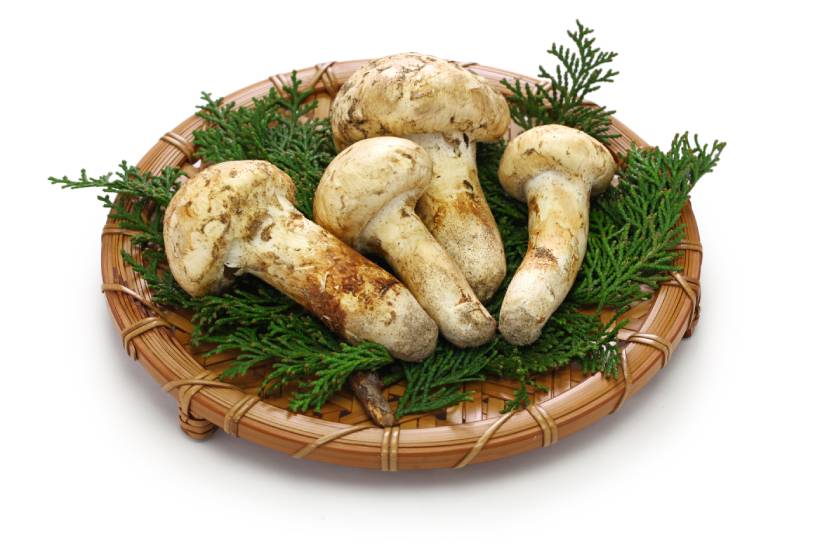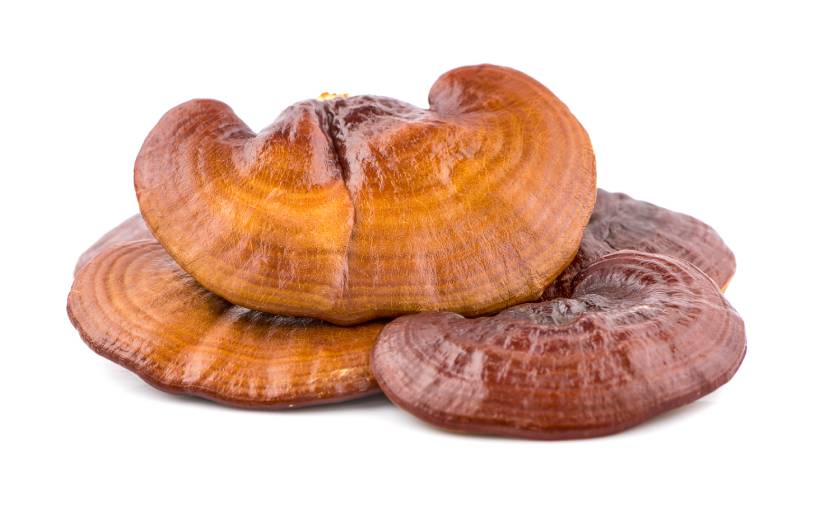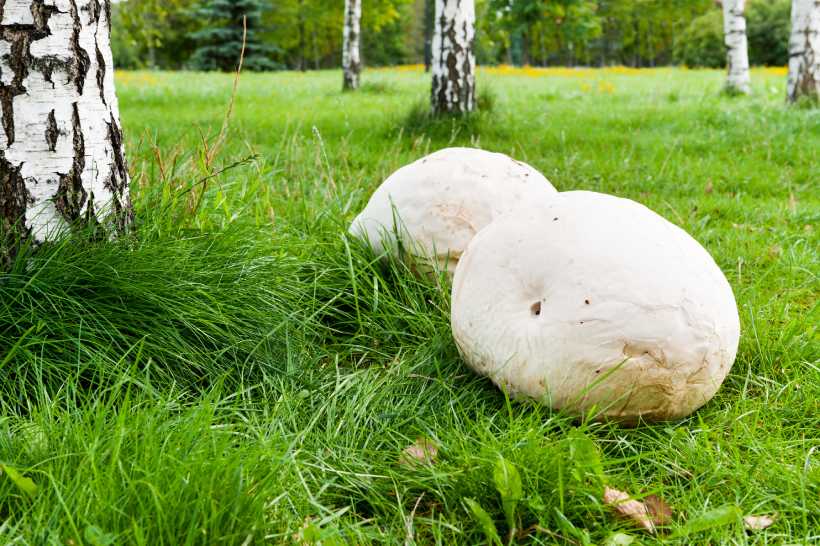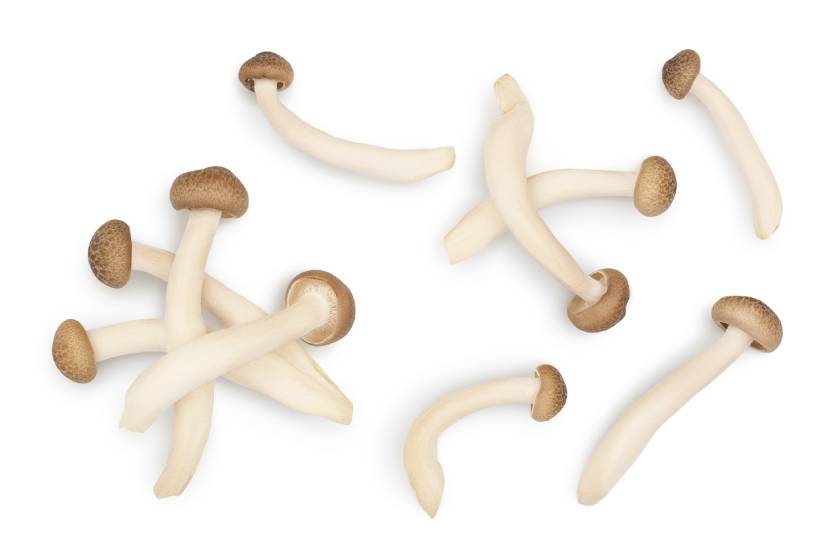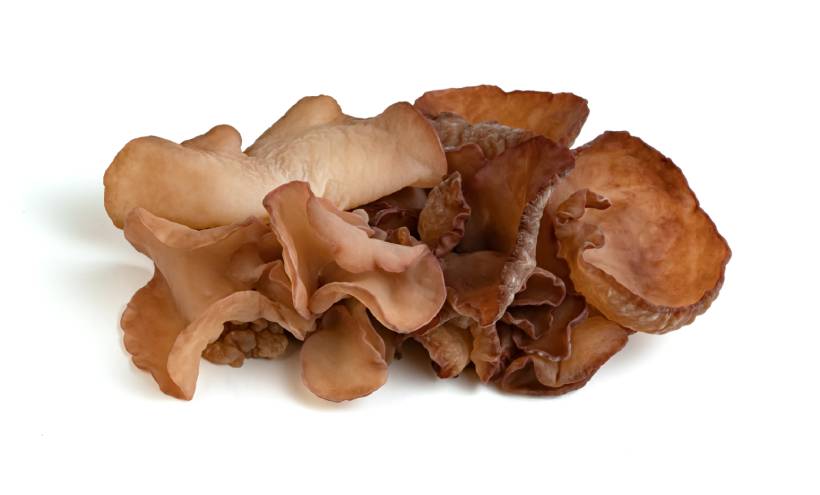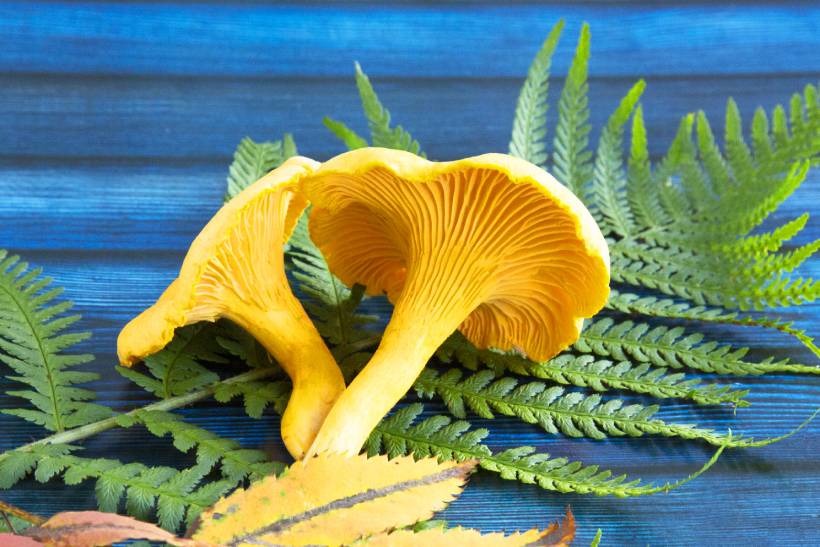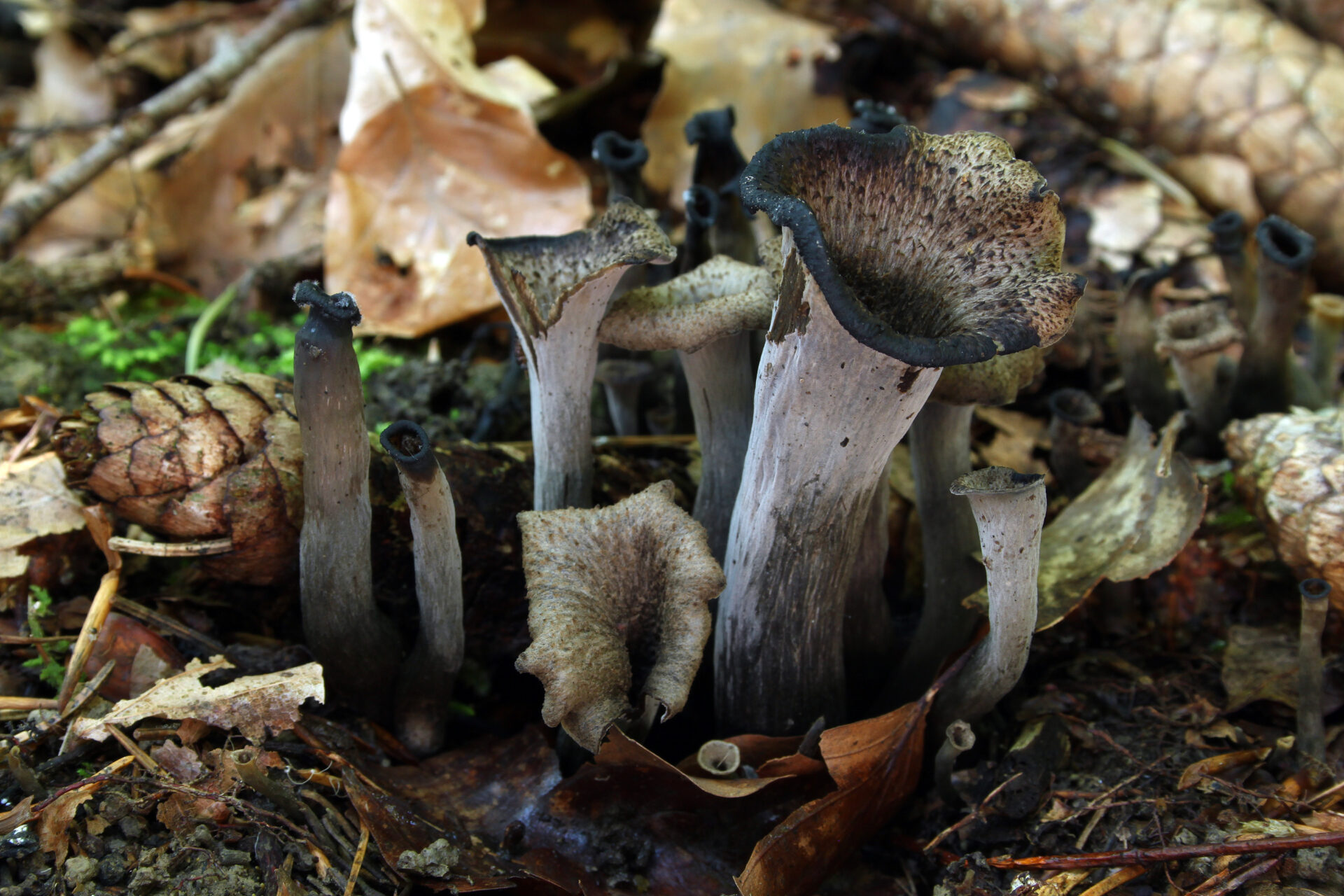most common edible mushrooms uk
There are many different types of mushrooms in the world.
Although they are technically a type of fungus, mushrooms are commonly categorized as a vegetable for culinary purposes.
CLICK HERE TO BUY EDIBLE MUSHROOMS IN THE UK
From common and affordable mushrooms to exotic varieties from abroad, there is a broad range of options.
This article presents a list of edible mushrooms with their main taste characteristics, nutritional values, pictures, how to use them, and more.
Note: unless otherwise stated, all nutritional values are for raw weight and courtesy of the UK and USA FoodData Central database.
1. Cremini Mushrooms
- Scientific name: Agaricus bisporus
- Alternate names: Baby bella, brown mushroom, chestnut mushroom, crimini
- Growing regions: Grassy areas of Europe and North America (1)
- How to cook: pan-frying, roasting, sauteing, soups/stews, stir-fries
Cremini mushrooms are a variety of mushroom that belongs to the white button mushroom family. The species name is Agaricus bisporus, and this family of mushrooms also includes portobello (2).
These three mushrooms—cremini, portobello, and white button—are the three most commonly consumed mushrooms globally (3).
That being said, these three mushrooms are actually the same mushroom. Although they look different, the variations in appearance just depend on age.
White button mushrooms are the freshest and youngest, then cremini, and portobellos have been left to mature for the longest time. Compared to white buttons, cremini mushrooms have a browner color, a meatier texture, and a deeper flavor.
Nutritionally, 3.5 oz (100 grams) of cremini mushrooms provide (4):
- Calories: 22 kcal
- Carbohydrate: 4.3 g
- Fiber: 0.6 g
- Sugars: 1.72 g
- Fat: 0.1 g
- Protein: 2.5 g
LOOKING TO BUY SOME MAGIC MUSHROOM IN THE UK? CLICK HERE
2. Morel Mushrooms
- Scientific name: Morchella esculenta
- Alternate names: Common morel, true morel
- Growing regions: East Asia, Europe, North America, West Asia
- How to cook: pan-frying, roasting, sauteing, soups/stews, stir-fries
These are certainly some of the most unique, unusual, and mysterious mushrooms in terms of their appearance.
Morel mushrooms (Morchella esculenta) look like honeycomb on a stick, and they taste as unique as they look. If you have tried shiitake mushrooms before, then you’ll understand the “meaty” taste they have.
These are like that, only more intense, and they have a kind of nutty flavor too. In short, if you like shiitake, you’ll probably love Morels.
Unfortunately, it’s hard to cultivate morel mushrooms on a large scale, so it is rare to find them in a store. However, they are available in some areas, and dried morel mushrooms are more widely available.
Growing kits to make your own are available too, and they can safely grow in the garden (disclosure: affiliate link).
The basic nutritional profile for morel mushrooms per 3.5 oz (100 grams) is as follows (5):
- Calories: 31 kcal
- Carbohydrate: 5.1 g
- Fiber: 2.8 g
- Sugars: 0.6 g
- Fat: 0.57 g
- Protein: 3.12 g
BUY MUSHROOM CHOCOLATE BARS IN THE UK
3. Shiitake Mushrooms
- Scientific name: Lentinula edodes
- Alternate names: Black mushroom, golden oak mushroom, oakwood mushroom
- Growing regions: Mainly East Asia (but available worldwide)
- How to cook: pan-frying, sauteing, soups/stews, stir-fries, stuffed with ingredients
Shiitake (Lentinula edodes) is one of the most popular types of mushrooms, and for a good reason: they taste delicious.
With a meaty, chewy taste, they go well with almost everything, and they are now the third most cultivated mushrooms in the world (6).
These mushrooms are often claimed to have health benefits too. While some of these claims are exaggerated, a randomized trial featuring 52 healthy men and women found that shiitake mushroom intake led to slightly lower CRP levels. CRP is a marker of inflammation, and the dosage in this study was at a level that is realistic of general daily consumption (7).
Per 3.5 oz (100-gram) portion, shiitake mushrooms provide the following nutritional values (8):
- Calories: 34 kcal
- Carbohydrate: 6.79
- Fiber: 2.5 g
- Sugars: 2.38 g
- Fat: 0.49 g
- Protein: 2.24 g
Shiitake mushrooms are available in dried form too, which have deeper and more concentrated flavor and higher nutritional value (disclosure: affiliate link).
4. Oyster Mushrooms
- Scientific name: Pleurotus ostreatus
- Alternate names: Abalone mushroom, tree mushroom
- Growing region: Mainly China, but produced worldwide (9)
- How to cook: pan-frying, sauteing, soups/stews, stir-fries
Oyster mushrooms are part of the Pleurotus family of mushroom species, and they grow on trees (10).
They have a striking appearance and a meat-like chewy texture. However, unlike some other mushrooms, oysters mushrooms only have a mild flavor.
Here are the basic nutritional values for oyster mushrooms per 3.5 oz (100-gram) serving (11):
- Calories: 33 kcal
- Carbohydrate: 6.09 g
- Fiber: 2.3 g
- Sugars: 1.11 g
- Fat: 0.41 g
- Protein: 3.31 g
5. King Oyster Mushrooms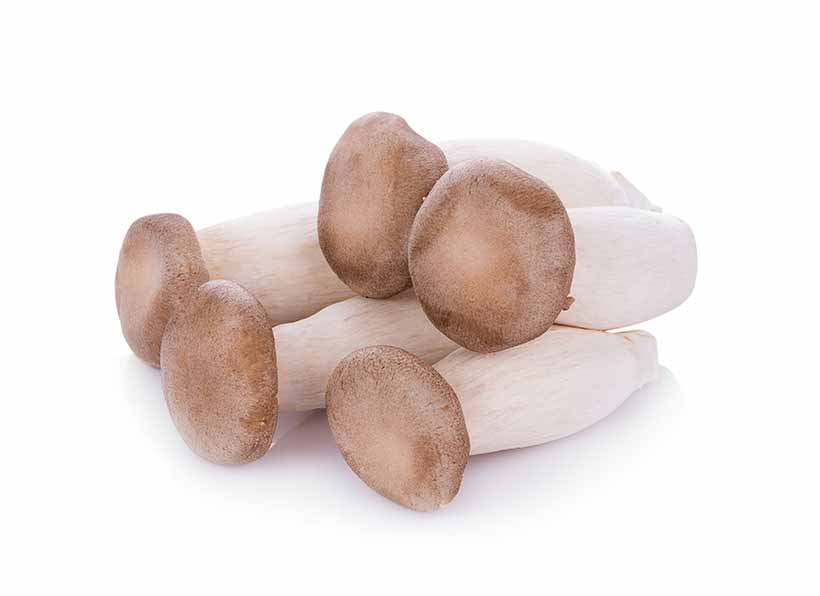
- Scientific name: Pleurotus eryngii
- Alternate names: King brown mushroom, king trumpet
- Growing region: Worldwide (12)
- How to cook: Grilling, pan-frying, roasting, sauteing, soups/stews, stir-fries
As shown above, king oyster mushrooms are one of the biggest types of edible mushrooms. They have a striking appearance and are very thick in shape, giving them an extremely chewy and spongy texture, similar to foods like squid.
For this reason, roasting king oysters in the oven works well and leaves you with a deep, rich flavor. Just add a bit of butter/oil and salt beforehand to enhance the taste.
The mushroom goes by the scientific name of Pleurotus eryngii and it is native to Europe, Asia, and North Africa, but different varieties can be found around the world (12).
The basic nutritional profile for king oyster mushrooms per 3.5 oz (100 grams) is as follows:
- Calories: 35 kcal
- Carbohydrate: 5.0 g
- Fiber: 1.0g
- Sugars: 1.0 g
- Fat: 0.50 g
- Protein: 3.0 g
Data Source: CRDB
Although king oyster mushrooms can be a little expensive, you can often pick them up for a lower price if you go to a Chinese/Asian market.
6. Lion’s Mane Mushrooms
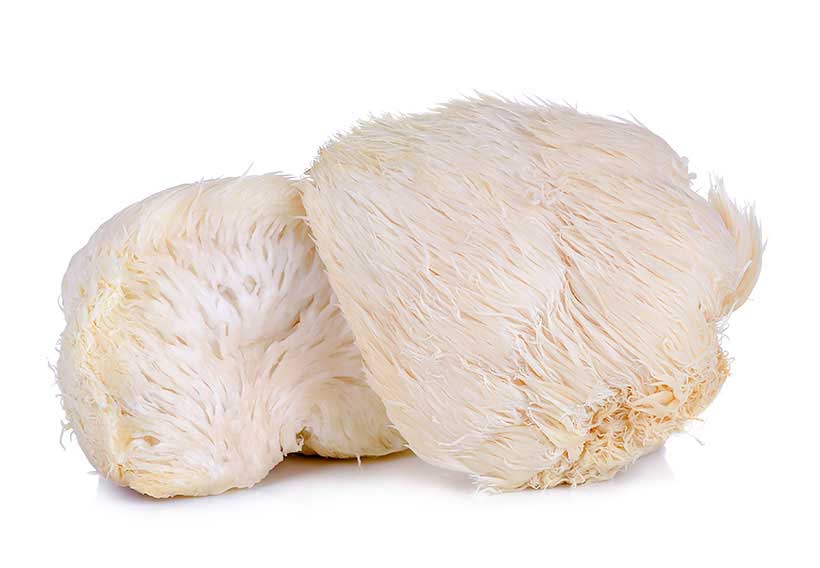
- Scientific name: Hericium erinaceus
- Alternate names: Bearded tooth, hedgehog mushroom, pom pom mushroom
- Growing region: Asia, Europe, North America
- How to cook: pan-frying, roasting, sauteing
Similar to morel mushrooms, the lion’s mane mushroom has an unusual appearance.
These mushrooms grow in the wild throughout Europe, North America, and Asia. Although relatively rare in Western dishes, it plays a larger role in Chinese cuisine.
The mushroom has also become popular in the health and supplement industry, and various products are available. These include extracts, tablets, and even coffee-mix drinks.
It can be difficult to find lion’s mane mushrooms for sale in their fresh form. However, it may be possible to buy them if you hunt around in some Asian grocery stores.
Lion’s mane mushrooms taste good: they are quite juicy and have an intense meaty flavor.
Per 3.5 oz (100-gram) serving, according to MyFitnessPal, here is the basic nutritional profile for lion’s mane mushrooms (13):
- Calories: 24 kcal
- Carbohydrate: 3.0 g
- Fat: 0 g
- Protein: 2.0 g
7. Enoki Mushrooms
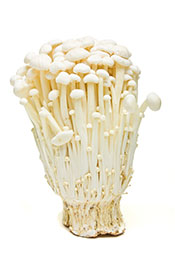
- Scientific name: Flammulina velutipes
- Alternate names: Enokitake, golden needle, lily mushrooms, string mushrooms,
- Growing region: Mainly China, Japan, and Korea
- Uses: pan-frying, roasting, sauteing, soups/stews, stir-fries
Enoki mushrooms (enokitake) are long and thin white mushrooms that resemble a piece of string. Again, they are among the more unique looking mushroom varieties.
Enoki mushrooms taste great, and they are also relatively simple to grow and cheap to buy.
In certain Asian and Italian dishes, they can act as an alternate “replacement” for noodles due to their chewy texture and noodle-like appearance.
For the same reason, tossing some into a stir-fry has great results.
Here are the basic nutritional values for enoki mushrooms per 3.5 oz (100 gram) serving (14):
- Calories: 37 kcal
- Carbohydrate: 7.81 g
- Fiber: 2.7 g
- Sugars: 0.22 g
- Fat: 0.29 g
- Protein: 2.66 g
8. White Button Mushrooms
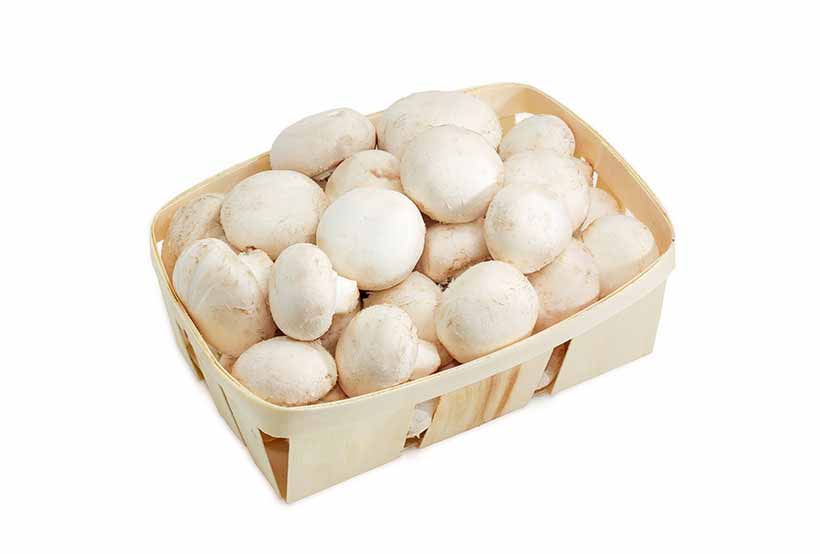
- Scientific name: Agaricus bisporus
- Alternate names: Button mushrooms, champignon, white mushrooms
- Growing regions: Grassy areas of Europe and North America (1)
- How to cook: pan-frying, pizza topping, roasting, sauteing, soups/stews, stir-fries
Button mushrooms (Agaricus bisporus) are the baby version of shiitake and cremini. These mushrooms are fresh and at an early-life stage.
Despite their basic white appearance, button mushrooms have an enjoyable and very flavorful taste when cooked. The mushrooms are also good at absorbing different flavors from foods they’re cooked alongside.
White button mushrooms have the most significant commercial production of any mushroom in the world. In fact, they represent 90% of the edible mushrooms consumed in the United States (15).
Nutritionally, here is the basic nutrition profile for white button mushrooms per 3.5 oz (100-gram) serving (16):
- Calories: 22 kcal
- Carbohydrate: 3.26 g
- Fiber: 1.0 g
- Sugars: 1.98 g
- Fat: 0.34 g
- Protein: 3.09 g
9. Portobello Mushrooms
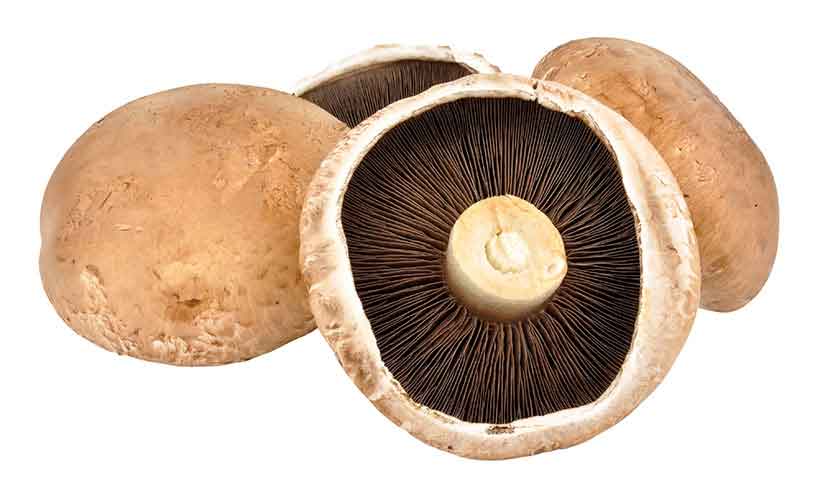
- Scientific name: Agaricus bisporus
- Alternate names: Button mushrooms, champignon, white mushrooms
- Growing regions: Grassy areas of Europe and North America (1)
- How to cook/use: Grilling, pan-frying, portobello burger, roasting, sauteing, soups/stews, stir-fries, stuffed with various ingredients
If button mushrooms are the babies, then portobello mushrooms are the grandparent. Portobello mushrooms are the same mushroom species as button and cremini mushrooms—Agaricus bisporus—but at a later, more mature stage of life.
Therefore, the mushrooms are much bigger and wider in diameter, as well as being deeper and richer in flavor.
Portobellos are one of the best-tasting types of mushrooms. Among the various cooking options, baked portobellos are delicious – especially when stuffed with some cheese and other ingredients.
For example, these portobello “pizzas” are a great example of what you can do with the mushrooms.
The mushroom provides the following basic nutritional values per 3.5 oz (100-gram) serving (17):
- Calories: 22 kcal
- Carbohydrate: 3.87 g
- Fiber: 1.3 g
- Sugars: 2.5 g
- Fat: 0.35 g
- Protein: 2.11 g
10. Porcini Mushrooms
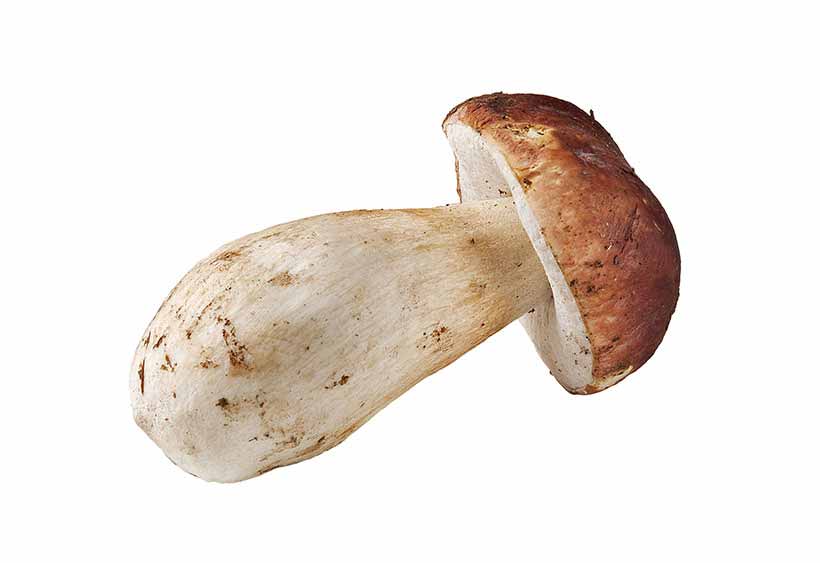
- Scientific name: Boletus edulis
- Alternate names: Boletus mushrooms, king bolete
- Growing region: Nothern hemisphere parts of Asia, Europe, and North America
- Uses: pan-frying, sauteing, soups/stews, stir-fries
Porcini mushrooms (Boletus edulis) are one of the most popular mushroom varieties for culinary purposes.
Unfortunately, they are also one of the most expensive. This relative expense is due to the difficulties in cultivating the mushrooms on a large scale. Thus, small-scale operations tend to sell the mushrooms for high prices due to the effort involved.
Due to their expense, porcini mushrooms are popular targets for mushroom foragers.
Taste-wise, they have a deep and intense flavor with an earthy taste and somewhat nutty notes.
Unfortunately, there are currently no published nutritional values for porcini mushrooms in any major nutritional database.
11. Maitake Mushrooms
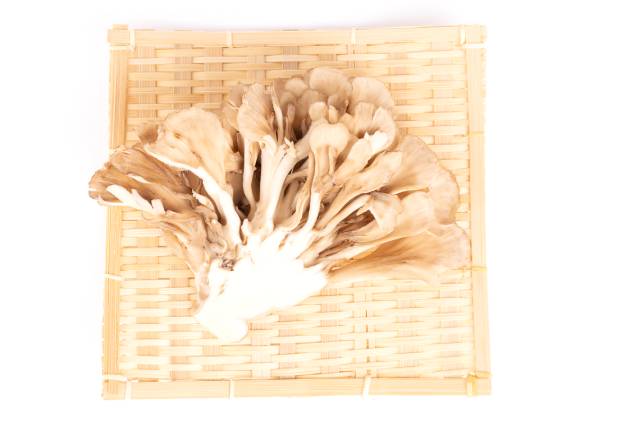
- Scientific name: Grifola frondosa
- Alternate names: Dancing mushroom, hen of the woods, king of mushrooms
- Growing region: East Asia, Europe, North America
- Uses: pan-frying, pizza topping, sauteing, soups/stews, stir-fries
Maitake mushrooms are meaty, full-flavored mushrooms that feature in a variety of Japanese and East-Asian dishes.
Despite this, they’re popular worldwide, and they also grow in the United States and Canada.
Research also suggests that maitake mushrooms may be the best mushroom source of vitamin D when grown with exposure to UV light (18).
Here are the basic nutritional values for maitake mushrooms per 3.5 oz (100-gram) serving (19):
- Calories: 31 kcal
- Carbohydrate: 6.97 g
- Fiber: 2.7 g
- Sugars: 2.07 g
- Fat: 0.19 g
- Protein: 1.94 g
12. Matsutake Mushrooms
- Scientific name: Tricholoma matsutake
- Alternate names: Pine mushrooms
- Cultivation origin: East Asia, Northern Europe, North America
- Uses: Grilling, pan-frying, sauteing, soups/stews, steaming,
Matsutake mushrooms are said to be the best-tasting edible mushroom. Those who have tried the mushrooms describe the aroma as “nearly impossible to describe” (20).
Having never tried the mushroom personally, it is described as being fruity, spicy, intense, pungent, and unique (21, 22).
On the negative side, matsutake mushrooms have never been commercially cultivated, and they are difficult to find. As a result, the mushroom commands a premium price that can unbelievably cost more than $1000 for a pound of matsutake mushrooms (23).
In Japan, these mushrooms are often gifted in lavish gift boxes to individuals of importance in the business world (24).
Perhaps understandably, matsutake mushrooms are a top target for mushroom foragers.
Once again, due to their relative rarity, there are no published nutritional values for matsutake mushrooms.
13. Reishi Mushrooms
- Scientific name: Ganoderma lingzhi
- Alternate names: Lingzhi mushrooms, varnish shelf
- Cultivation origin: Parts of Europe and East Asia (rare) (25)
- Uses: Mushroom tea, supplements
Reishi mushrooms have a unique and attractive appearance, with a tough and glossy exterior. For this reason, they have the nickname of ‘varnish shelf mushrooms.’
These mushrooms mainly grow in China and other East Asian countries like Korea. Although they are edible types of mushrooms, they are too hard and tough to be enjoyed in this manner.
Reishi mushrooms are usually thought of as a so-called ‘medicinal mushroom’ and feature numerous supplements. The mushrooms are also often boiled to make tea (26).
However, it is probably better to be wary about over-hyped ‘medicinal’ claims from mushroom supplementation.
While there are many claims of health benefits, a recent randomized controlled trial involving 84 human participants found no statistically significant effects on blood sugar, blood lipids, blood pressure, or other noteworthy markers of health (27).
14. Giant Puffball Mushrooms
- Scientific name: Calvatia gigantea
- Alternate names: True puffballs
- Cultivation origin: Worldwide in temperate climates
- Uses: Deep-frying, pan-frying, roasting
Looking more like a big white ball than a mushroom, giant puffball mushrooms have a unique size and appearance.
Giant puffball mushrooms typically grow in grassy fields, but they can be hard to find.
These mushrooms are generally cut into large slices and fried in oil, and they have a relatively mild taste.
Although the small-scale commercial sale of giant puffballs takes place, they are rare to see in stores.
15. Buna Shimeji Mushrooms
- Scientific name: Hypsizygus tessellatus
- Alternate names: Beech mushroom, brown beech mushroom, clamshell mushroom, white beech mushroom
- Growing region: Temperate climates of Australia, Europe, and North America (28)
- Uses: Pan-frying, roasting, sauteing, soups and stews, stir-frying
Shimeji mushrooms mainly grow in two varieties, which are white and brown in color respectively. The mushrooms are very popular and widely cultivated in areas where they grow (29).
The mushrooms have an earthy, mildly sweet, and nutty flavor.
Shimeji mushrooms are very prevalent in the areas (near beech trees) where they grow. Thus, they are relatively affordable compared to some of the other lesser-known mushrooms.
16. Pepeao (Jew’s Ear)
- Scientific name: Auricularia auricula-judae
- Alternate names: Jew’s ear, jelly ear, wood ear
- Growing region: Worldwide
- Uses: Pan-frying, sauteing, soups and stews, stir-frying
Pepeao grows on wood in nations throughout the world, and it has a unique ear-like shape and appearance.
For this reason, the mushroom often goes by the name of ‘jew’s ear’ or ‘jelly ear.’ Although the former of these names may sound slightly concerning, the name is not a reference to the religion or intended as anti-Semitic.
These ear-shaped mushrooms are also rather tasty, and they have a mildly chewy texture that absorbs flavors well.
Nutritionally, 3.5 oz (100 grams) of pepeao provides the following basic values (30):
- Calories: 25 kcal
- Carbohydrate: 6.75 g
- Fat: 0.04 g
- Protein: 0.48 g
17. Straw Mushrooms
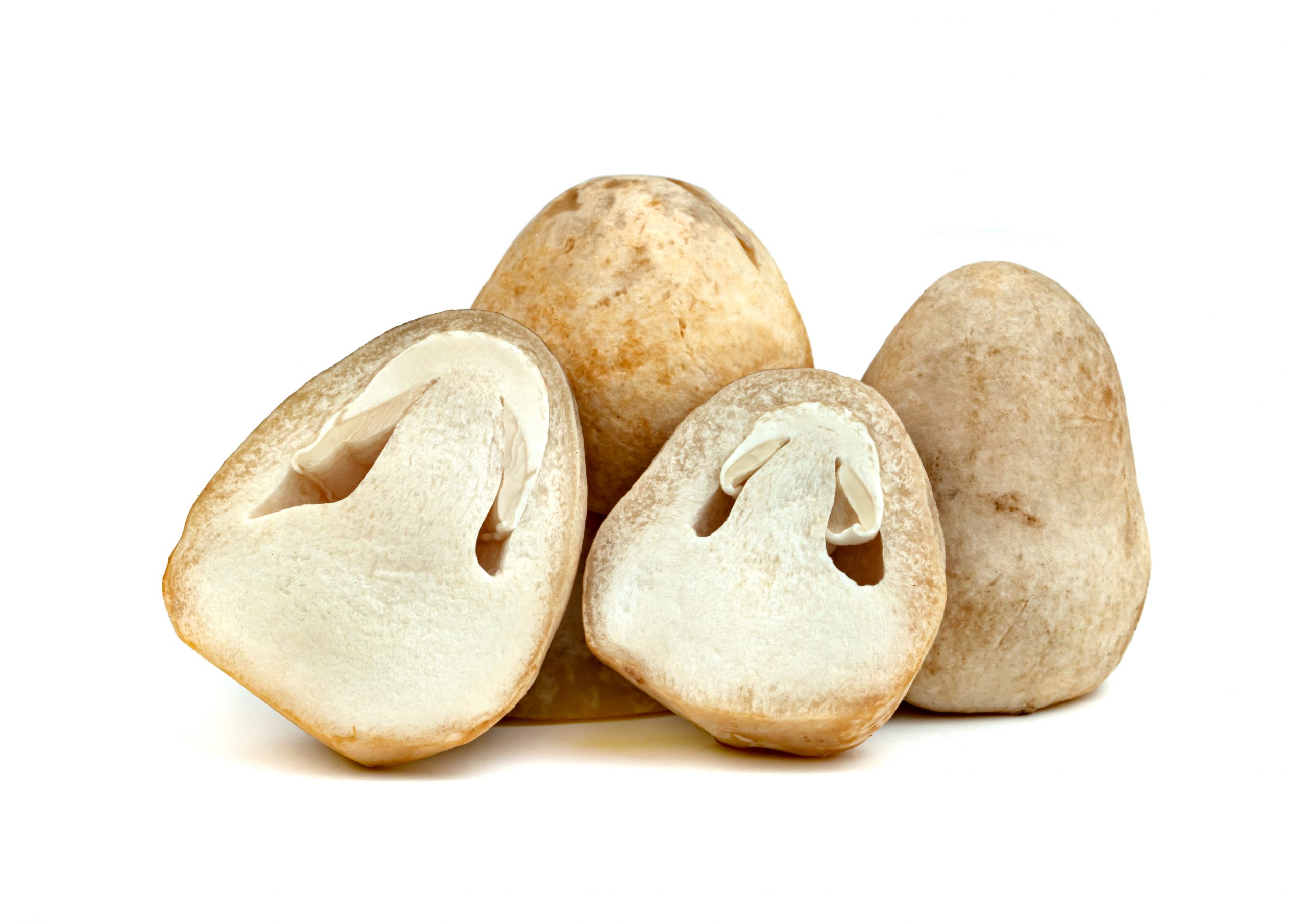
- Scientific name: Volvariella colvacea
- Alternate names: Paddy straw mushroom
- Growing region: Primarily Asia
- Uses: Pan-frying, sauteing, soups and stews, stir-frying
Straw mushrooms mainly grow in East Asia and other localized parts of Asia.
These mushrooms often feature in Asian stews and stir-fries, and they contribute a pleasant mild flavor and a chewy texture.
Although straw mushrooms have a relatively mild flavor, they absorb other flavors from dishes well.
It is extremely rare to find straw mushrooms for sale fresh outside the areas where they grow. However, canned straw mushrooms are sold around the world and are relatively easy to find.
On a nutritional basis, a typical 3.5 oz (100-gram) portion of straw mushrooms will offer (31):
- Calories: 32 kcal
- Carbohydrate: 3.83 g
- Fiber: 2.5 g
- Fat: 0.68 g
- Protein: 3.83 g
18. Chanterelle Mushrooms
- Scientific name: Cantharellus cibarius
- Alternate names: Golden chanterelle
- Growing region: Worldwide
- Uses: Pan-frying, roasting, sauteing, soups and stews, stir-frying
Chanterelle mushrooms have a unique uniform yellow color, and they are among the most popular types of edible wild mushrooms.
The mushrooms grow in regions worldwide, and they can be found across Africa, Europe, and North America (32).
In a culinary sense, chanterelle mushrooms are thought of as being one of the best-tasting edible mushrooms. This is because they have a rich depth of flavor and contribute numerous flavors to dishes in which they feature.
However, due to the lack of commercial cultivation, they tend to be quite expensive at around $20 to $30 per pound (33).
Per 3.5 oz (100 grams), chanterelles have the following basic nutrition profile (34):
- Calories: 32 kcal
- Carbohydrate: 6.86 g
- Fiber: 3.8 g
- Sugars: 1.16 g
- Fat: 0.53 g
- Protein: 1.49 g
Important Note On Foraging For Wild Edible Mushrooms
Just a final note: always be extremely careful if foraging for mushrooms in the wild. It must be remembered that many non-edible mushrooms contain potent toxins.
The golden rule is never to pick and eat a mushroom if you are not 100% sure. Doing so without positively identifying the species is potentially very dangerous. For this reason, foraging should be left to those with expert knowledge of identifying mushrooms.
THE 12 BEST EDIBLE WILD MUSHROOMS
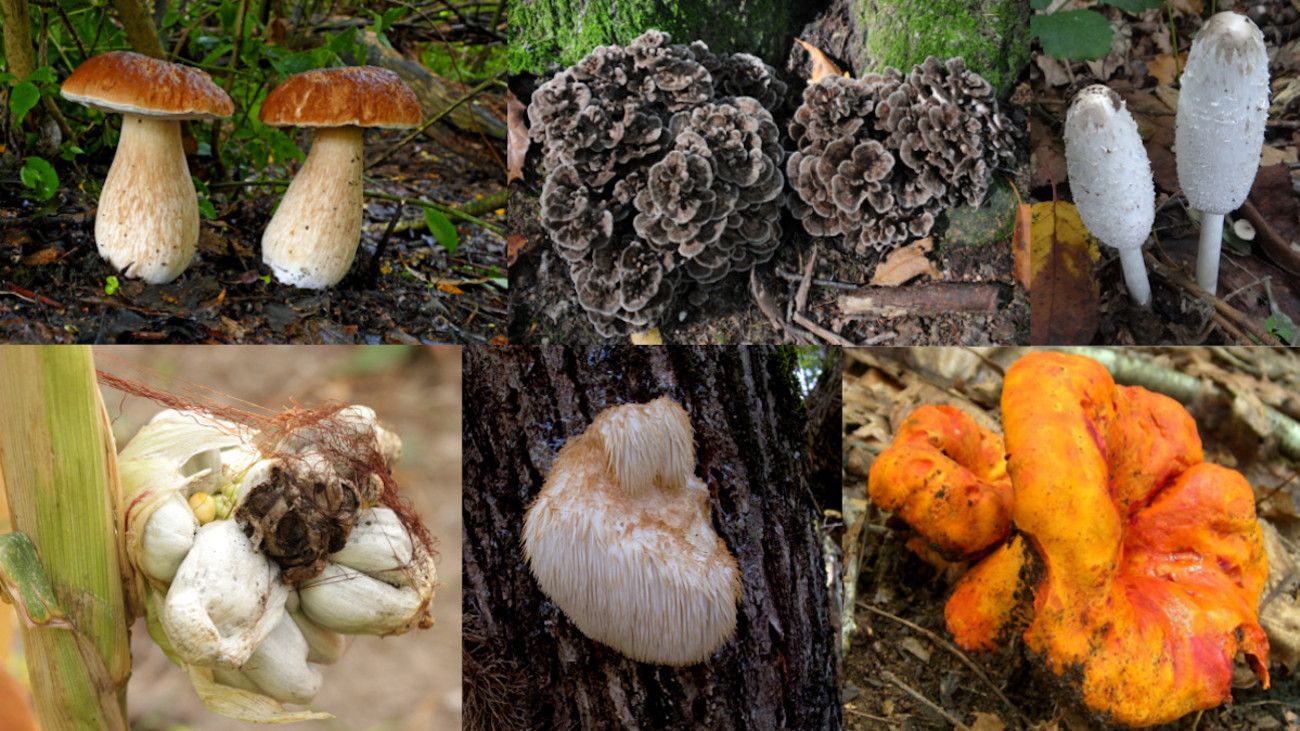
Most mushroom hunters call it quits after morels stop popping in spring, but that shouldn’t be the case. Edible mushrooms can be foraged year-round (even winter), and the mild temperatures of fall inspire growth that’s second only to spring. Here are 12 edible, wild mushrooms to look for this autumn.
Puffball Mushrooms Identification: Puffballs are possibly the easiest mushroom to identify from this list. You’ll find them as small as a baseball and as big as a basketball. Immature varieties of other mushrooms can look like a puffball on the exterior, but you can cut them open to be sure. If the flesh is totally solid from one end to the other, then it’s a puffball. If there is any kind of hollow area, stem, or cap, then it’s something else.
When: Puffballs will grow from spring to fall. Like most mushrooms, they’re most likely to appear after a shot of rain and mild to warm temperatures. If you’ve found puffballs in spring or summer, you can find them in those same places in fall.
Where: Puffballs grow everywhere but seem to favor disturbed areas. I’ve found them in open pastures and dense forests, so there’s no telling where this fungus will show up.
Preparation: A quality puffball will have solid white flesh. If there is any hue of purple or black, either trim around those areas or toss the whole thing. Puffballs are often referred to as the breakfast mushroom because they pair so well with omelets and breakfast burritos. I use them as a complimentary mushroom on burgers or in pasta, but they can also be turned into imitation pizza crusts or mozzarella sticks.
Shaggy Mane Mushrooms Identification: Shaggy manes are part of the “foolproof four”—a group of wild mushrooms that are easy to identify and don’t have many inedible lookalikes. These ones have a distinct, scaly, conical cap that resembles a British barrister’s wig. Once they start to age, they’ll develop a black goo that starts at the bottom of the gills and works its way up.
When: Shaggy manes have one of the longest growing seasons of wild mushrooms, making appearances from spring to fall. They predictably appear after precipitation.
Where: This is the most likely edible mushroom to appear in your backyard. Shaggy manes love disturbed areas like bike trails, ditches, soccer fields, parks, boat ramps, game trails, etc. They’re more likely to grow in the open than dense cover.
Preparation: Shaggy manes have a very delicate flesh and shorter shelf life than other wild edibles. Cook them within hours or days after harvest and use them on steaks, on burgers, in pastas, in soups, or in stir fry.
Chicken of the Woods Mushrooms Identification: Chicken of the woods are another one of the foolproof four, meaning there isn’t really a chicken of the woods look alike. They get their name because of their rooster-like vibrant colors that are easily spotted in the woods. They exclusively grow on trees or out of the ground above roots. Some people refer to them as the “sulfur mushroom.” They sometimes grow in massive clusters too big for one person to harvest.
When: Chickens are quite seasonal based on region. I often find them in late August to early October in the Great Plains, but in other parts of the country they’ll grow as early as April and as late as November.
Where: Chickens are most likely to appear on freshly dead trees. The trees can be standing or fallen. On standing trees, you’ll often find them at waist height or lower, but I’ve also seen them 20 feet up.
Preparation: Chickens are a hardy mushroom, which allows you to use them in a number of cooking applications. In the vegan world, these are a favorite substitute in any recipe that calls for chicken or tofu. I like them as chicken of the woods alfredo, chicken of the woods noodle soup, and chicken of the woods stir fry.
Hen of the Woods Mushrooms Identification: Hen of the woods are the female counterpart to chicken of the woods (not literally, just in namesake). They grow in similar areas and have a similar shape, but lack the flamboyant colors. They grow in a large rosette with spoon- or fan-shaped caps that are tightly stacked. They’ll often be tan or cream colored. Some foragers refer to them as maitake, ram’s head, or sheep’s head.
When: Hens can appear from spring to fall but are most common in late summer and early fall. They are most likely to grow after a rain event and warm weather.
Where: Hens aren’t exclusively found on oak trees, but almost. They’re usually found at the base of hardwood trees and old stumps.
Preparation: Hens are one of the finest wild mushrooms you can find. They are hearty like chicken of the woods and can be used as a chicken substitute in any recipe. Their meaty texture makes them one of the easiest mushrooms to use in soup.
Oyster Mushrooms Identification: Like chicken or hen of the woods, oysters exclusively grow on trees. Unlike chicken or hen of the woods, oysters have gills. They often grow in smaller clusters with a flat, fan-shaped appearance. Their colors don’t vary much; they’re almost always white.
When: Oysters are most likely to appear after a good rain and mild temperatures. They’ll start showing up about the same time as morels, but will make appearances into fall.
Where: Oysters often grow on dying or dead hardwoods, like sugar maple and beech. They’ll grow on standing or fallen trees. They’re a common mushroom to find along waterways.
Preparation: Oysters are one of the few mushrooms from this list that you’ll find at the grocery store. They don’t have much for flavor but do have a great texture. Use them as a complimentary mushroom to meats, pastas, soups, and stir fry. Oysters are a popular choice for Asian cuisine.
Honey Mushrooms Identification: Honeys have a pretty bland appearance. Their cap is smooth with gills attached to the stem or beginning to run down it. Their name comes from their color, not their taste—honey mushrooms will be white to slightly pinkish. They’ll grow in clusters and the stems will appear to originate from the same spot. Honeys have a variety of inedible lookalikes (some are even toxic). This isn’t a beginner mushroom—make sure you know exactly what you’re taking home.
When: They are found pretty much year-round in warmer climates, but more often show up in fall after rain.
Where: They’re most common in the Midwest and on the coasts. They’re often found around hardwoods that are rotting, dying, or dead, but will sometimes be found near wood chips or standing conifers.
Preparation: Some refer to honey mushrooms as slimy and unappetizing, but they still make for good table fare. You wouldn’t cook them to standalone like chickens or hens, but use them to compliment meats or vegetables.
Lion’s Mane Identification: Lion’s manes are one of the ugliest edible mushrooms. They look like their namesake, along with their other monikers (bearded tooth mushroom and pom pom mushroom). They are white when fresh but turn yellow or brown when past their prime.
When: They show up in mid-summer and stick around through the end of fall.
Where: They exclusively grow on hardwood trees, specifically oak and beech. Unlike most other mushrooms that grow on wood, these are usually found higher up in trees rather than at the base.
Preparation: Lion’s manes have decent flavor and texture, but they’re more so sought after for their medicinal purposes. Many claim that they are good for brain health and help prevent dementia, Alzheimer’s, and Parkinson’s. Cook them for longer than most mushrooms because they contain so much moisture that takes plenty of time and heat to sweat out.
Chanterelle Mushrooms Identification: Chanterelles are one of the most highly regarded wild mushrooms. They’re quite recognizable with their bright orange and yellow coloration. Some claim that they have a fruity smell that’s most often described as apricot. Jack-o-lantern mushrooms are very toxic and look somewhat alike, but the similarities end at color. Confusing a chanterelle for a jack-o-lantern is like confusing a deer for an antelope.
When: Chanterelles will show up as early as late spring but are more common in late summer and early fall.
Where: Chanterelles grow in mature forests and are most common around maple, beech, poplar, birch, pine, fir, and oak trees. They’ll often grow in sizeable clusters that are easy to spot from a distance. Look for soil that has a lot of moisture, like low spots and waterways.
Preparation: These are some of the easier mushrooms to work with in the kitchen. They clean easily and can be used in a ton of applications. Because of their vibrant color and great taste, I like to make them the focus of a dish—sautéed in a pan as an appetizer or loaded on top of a slice of wild game.
Lobster Mushrooms Identification: Lobsters rank right up there with chanterelles and chicken of the woods for aesthetics. They have vibrant orange flesh that resembles cooked lobster meat. Their cap and stem are irregular and inconsistent. Not many other fungi look like them.
When: Lobsters start showing up as early as July but are more common in September and October. They have a pretty short shelf life compared to other mushrooms on this list.
Where: These mushrooms most commonly grow around trees (hemlock is a favorite). If you find lesser known Russulas or Lactarius, there are likely lobsters nearby.
Preparation: Another reason they’re called lobster mushrooms is because their aroma is somewhat like seafood. I think you have to use your imagination to smell that, but many stand by this assertion. Lobsters are a meaty mushroom, which is great because they often take a lot of trimming to remove soil and mold. These mushrooms are common in dishes that call for white wine.
Bolete Mushrooms Identification: There are about 300 species of bolete and nearly all are edible. There are a couple that are better than others, like the king bolete, admirable bolete, and aspen bolete. Some foragers refer to them as porcini. They have a bulbous stem and large cap that are typically natural colors like tan and brown.
When: Boletes can be found spring through fall, but are most common in late summer and early fall.
Where: Boletes grow in mature forests. They’re found near a variety of trees like pine, spruce, hemlock, fir, red cedar, aspen, and birch.
Preparation: Boletes are notorious for housing creepy crawlies. It’s not uncommon to pick a bolete that is filled with worms and insects, rendering them inedible. Usually you’re able to find enough to salvage any harvest, though. Boletes are great for any cooking application, including dehydrating.
Black Trumpet Mushrooms Identification: Black trumpet mushrooms don’t look like much else on this list. They don’t have gills or other visible spore-bearing structures, and their shape would be best described as the instrument they’re named after. Despite their moniker, they’re often brown or gray in color. Some people refer to them as black chanterelles.
When: Black trumpets are found in summer and fall throughout most of their range. In warmer regions, they’re common in winter. They often show up after a rain.
Where: They grow around decaying material and trees. Black trumpets are most common in wooded areas near oak and beech trees. These are tough to spot because of their color, but if you see moss or other mushrooms, there’s a good chance trumpets are nearby.
Preparation: Despite their appearance, black trumpets don’t have very delicate flesh. Some describe their flavor as rich and smoky. You’ll want to use them as a complimentary mushroom in dishes that have other strong flavors, like soups, sauces, and seafood recipes.
Corn Smut Identification: Corn smut grows on ears of corn. You can easily see it on the outside of the husk—fresh corn smut will be white, while old corn smut will be black. There are no look-alikes to confuse it with.
When: It’s common when the corn is stressed out following a hail storm, wind storm, drought, or some other event. It most often shows up in late summer but can stick around into fall.
Where: It’s found on any variety of corn. Look for stressed out stalks that are most common on field edges exposed to wind or high spots that don’t get as much moisture. It’s found throughout North America.
Preparation: You only want to pick smut that is white and firm. There is usually minimal cleaning involved. It’s a delicacy in Mexico and most often eaten in quesadillas, tacos, and soups. You need to prepare it within a few days of harvest.

